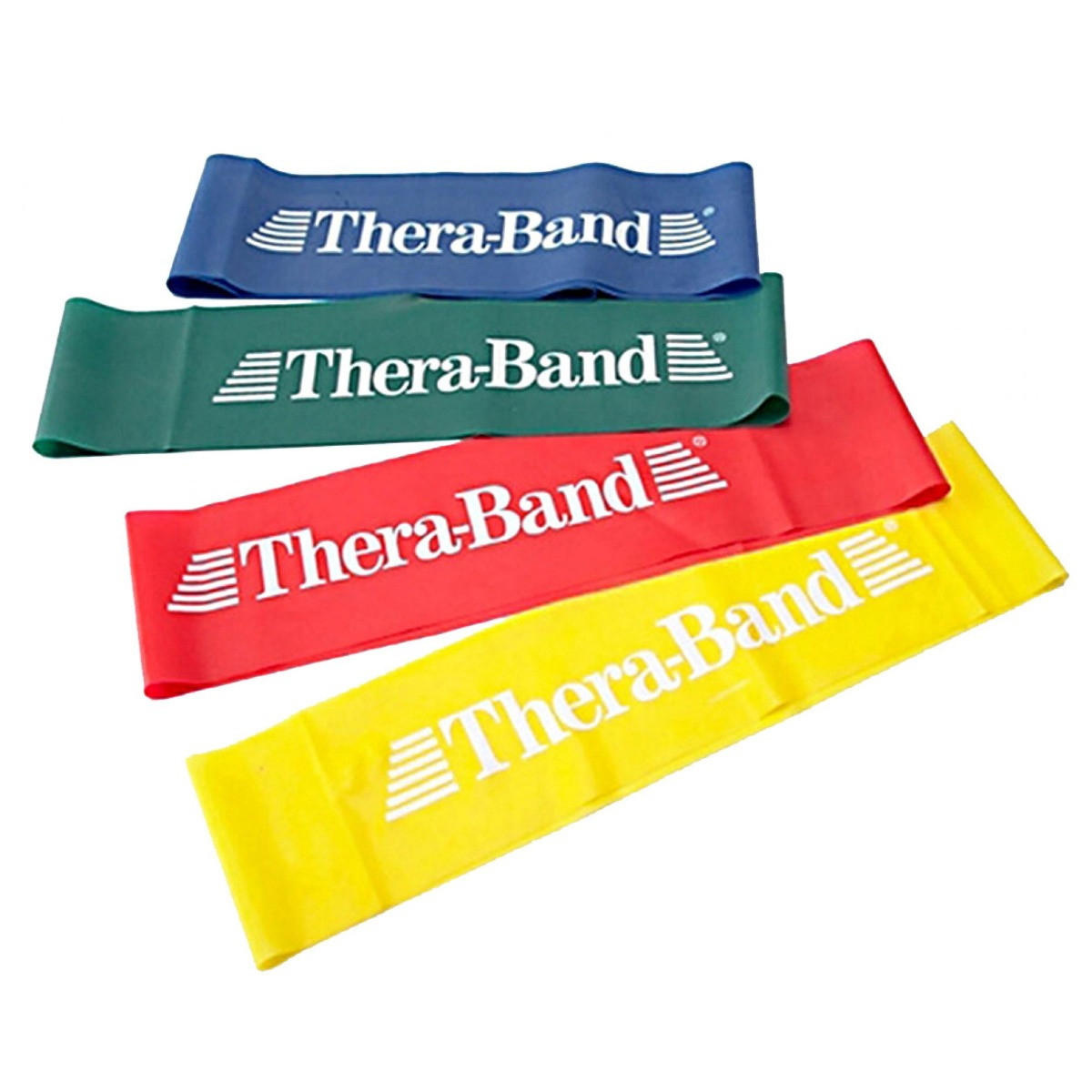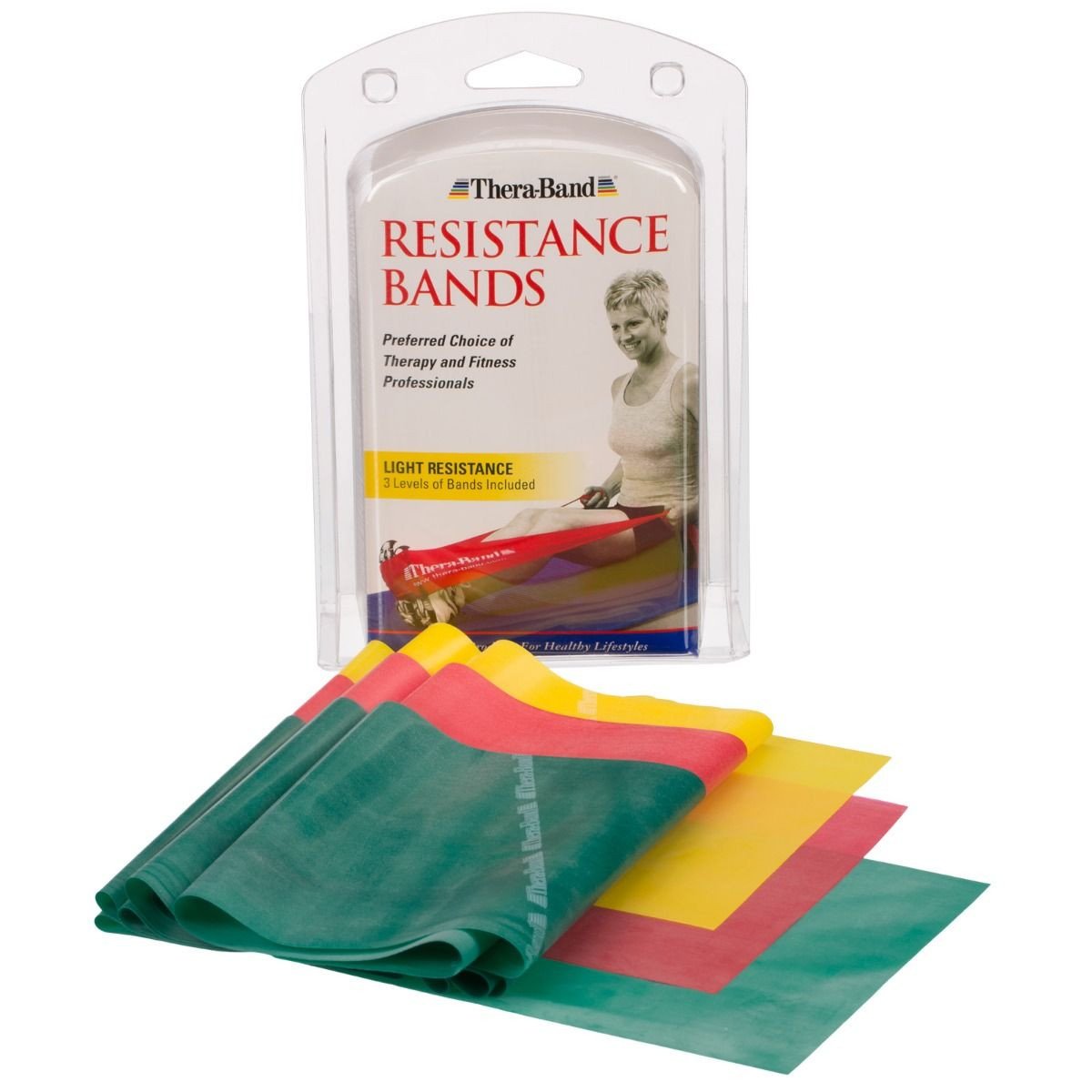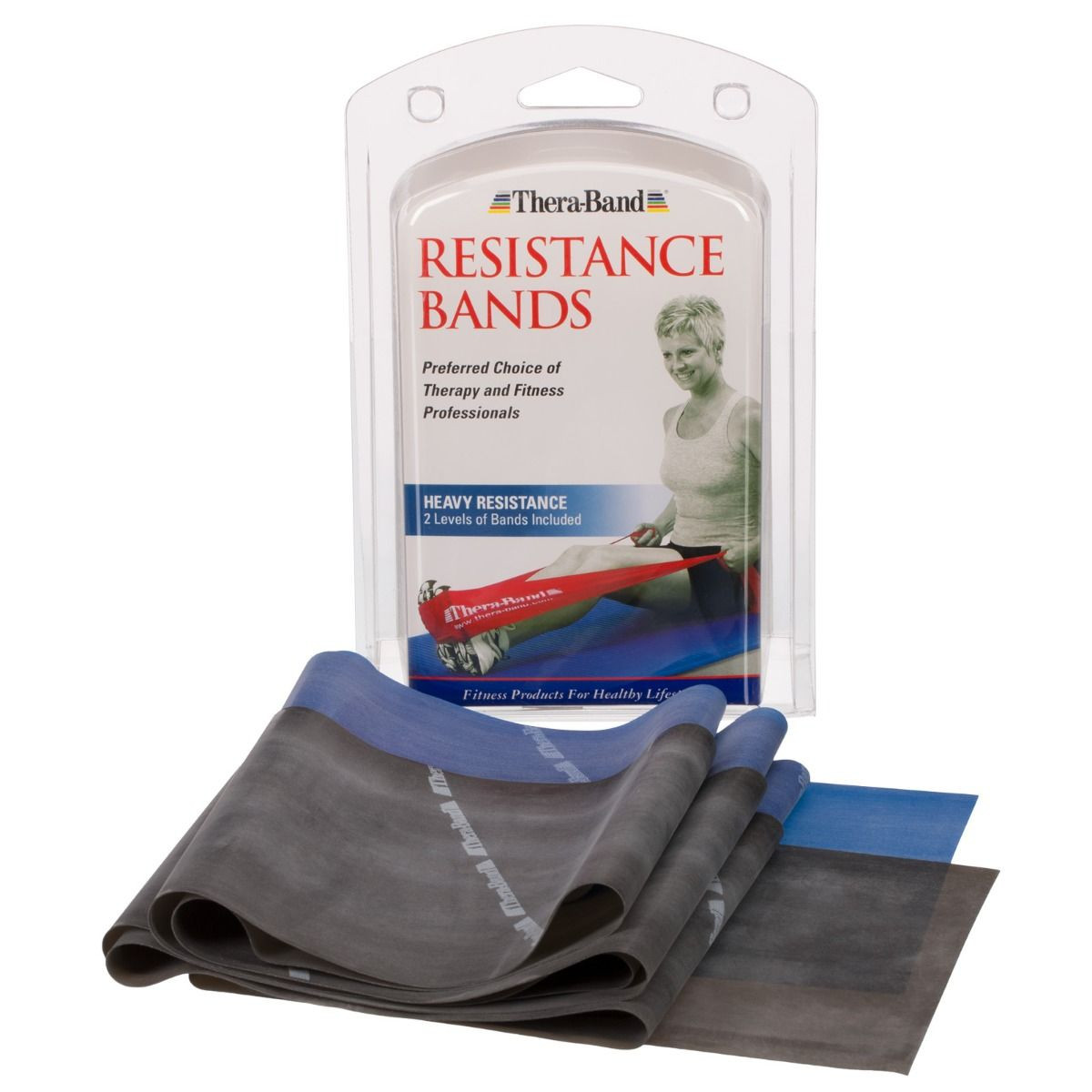Are you a football player looking to enhance your performance? This guide details How To Use Resistance Bands For Football to improve speed, power, and reduce injury risk. Let CAUHOI2025.UK.COM provide reliable and understandable information to optimize your training regimen.
Table of Contents
- Introduction to Resistance Band Training for Football
- Benefits of Using Resistance Bands in Football Training
- Types of Resistance Bands for Football
- Essential Resistance Band Exercises for Football Players
- Warm-up Exercises
- Speed and Agility Drills
- Strength and Power Exercises
- Cool-down Stretches
- Creating a Resistance Band Workout Plan for Football
- Safety Tips When Using Resistance Bands
- Incorporating Resistance Bands into Your Football Training Schedule
- Advanced Resistance Band Techniques for Football
- Expert Advice and Tips for Optimal Results
- Frequently Asked Questions (FAQs)
- Conclusion: Maximize Your Football Performance with Resistance Bands
1. Introduction to Resistance Band Training for Football
Resistance band training is a highly effective method for football players to improve their performance. These versatile tools offer a range of benefits, including enhanced strength, speed, agility, and injury prevention. By incorporating resistance bands into your training regimen, you can target specific muscle groups crucial for football, such as the legs, core, and shoulders. This comprehensive guide will walk you through everything you need to know about using resistance bands to elevate your football game. At CAUHOI2025.UK.COM, we’re dedicated to providing you with trustworthy and actionable information.
2. Benefits of Using Resistance Bands in Football Training
Resistance bands provide several advantages over traditional weightlifting, making them an excellent choice for football players:
- Increased Muscle Strength and Power: Resistance bands provide variable resistance, which means the resistance increases as the band is stretched. This type of resistance effectively builds muscle strength and power, crucial for explosive movements in football.
- Improved Speed and Agility: Many resistance band exercises focus on lateral movements and explosive actions, enhancing a player’s speed and agility on the field.
- Enhanced Flexibility and Range of Motion: The use of resistance bands can improve flexibility and range of motion, which are essential for preventing injuries and maximizing performance.
- Reduced Risk of Injury: Resistance bands are low-impact, reducing the risk of joint stress compared to heavy weights.
- Portability and Convenience: Resistance bands are lightweight and easy to carry, making them ideal for training anywhere, whether at home, in the gym, or on the field.
- Core Engagement: Resistance band exercises often require significant core stabilization, leading to a stronger core and improved overall stability. According to a study published in the Journal of Strength and Conditioning Research, resistance band training significantly improves core strength and stability (Anderson et al., 2018).
3. Types of Resistance Bands for Football
Selecting the right type of resistance band is essential for effective training. Here are the most common types:
- Loop Bands: These are continuous loops of rubber, ideal for lower body exercises like squats, leg extensions, and agility drills.
- Tube Bands with Handles: These bands have handles on each end, making them suitable for upper body exercises like rows, chest presses, and bicep curls.
- TheraBands: These are flat, latex-free bands that come in varying resistance levels. They are versatile and can be used for a wide range of exercises.
- Figure 8 Bands: These bands are shaped like the number 8 and are excellent for targeting specific muscle groups, especially in the upper body.
- Mini Bands: Small loop bands primarily used for activating muscles and improving hip and glute strength.
Choosing the right resistance level is also important. Most bands come in different colors, each representing a different level of resistance (e.g., yellow for light, red for medium, green for heavy). Start with a lighter resistance and gradually increase as you get stronger.
4. Essential Resistance Band Exercises for Football Players
Here are some key resistance band exercises tailored for football players, categorized by their primary benefits:
Warm-up Exercises
- Band Walks: Place a loop band around your ankles and walk laterally, focusing on keeping tension on the band. This warms up the hip abductors and glutes.
 Band Walks for Football Warm-up
Band Walks for Football Warm-up - Glute Bridges with Band: Lie on your back with a loop band above your knees. Perform glute bridges, squeezing your glutes at the top. This activates the glutes and hamstrings. According to a study by the National Strength and Conditioning Association, glute activation exercises are crucial for preventing lower body injuries in athletes (Clark et al., 2020).
- Shoulder Dislocates: Hold a TheraBand with a wide grip and rotate your arms forward and backward. This improves shoulder mobility and warms up the rotator cuff muscles.
Speed and Agility Drills
- Lateral Shuffle: Place a loop band around your ankles and shuffle laterally, maintaining a low center of gravity. This improves lateral speed and agility.
- Resisted Sprint: Attach a resistance band to a partner or a stable object and sprint forward against the resistance. This builds explosive power in the legs.
- Agility Ladder Drills with Band: Perform agility ladder drills with a loop band around your ankles to increase the challenge and improve foot speed and coordination.
- The Running Man: Place a loop band around your ankles. Step one foot in front of you and one foot behind you. Jump your feet back and forth as if you are running. This improves your sprint speed by conditioning your calves and quads.
- In and Out: Place a loop band around your ankles. Stand with your feet hip-distance apart. Step one foot out to the side and then back to the starting position, repeat. Repeat on the other side. This improves your lateral movements by strengthening your hip flexors and groin.
- Jumping Jacks: Place a loop band around your ankles. Perform a jumping jack. Stand with your legs together and your arms at your sides. Bend your knees slightly and jump your feet out to shoulder-width apart while bringing your arms out and over your head. Jump back to your starting position. Repeat. This improves your explosive power by strengthening your hip flexors and groin.
- Crab Walk: Place a loop band around your ankles. Stand with your legs slightly wider than hip-distance apart. Take half a step sideways against the resistance band. Take half a step inward with the opposite leg. Repeat. Switch directions and repeat. This improves your lateral speed by strengthening your hips and groin. Repeat the exercise with increased speed to improve your explosive power.
- Side Steps: Place the loop band just above your knees. Start with your feet hip-distance apart. Step out to the right side with one foot. Step together, returning to hip-distance apart with the other foot. Step out to the left side with one foot. Step together, returning to hip-distance apart with the other foot. Repeat. This improves your power by strengthening your hips, quads, and glutes.
 Side Steps With Resistance Bands
Side Steps With Resistance Bands - Wideouts: Place the loop band around your ankles. Stand with your feet hip-distance apart. Jump your feet out, then jump them back into your starting position. Repeat.
- Speed Shuffle: Place the loop band around your ankles. Shuffle back and forth a few paces to the left and then a few paces to the right as fast as possible.
- Stepovers: Place the loop band around your ankles. Step, swing your right foot out towards your left, and complete the step in front of where your right foot originally was. Step, swing your left foot out towards your right, and complete the step in front of where your left foot originally was. Repeat.
- Standing Sprint: Place the loop band around your feet. Stand with your feet hip-distance apart. Swing your arms and bring one knee up towards your chest explosively, repeat. Repeat with the other leg.
Strength and Power Exercises
- Squats with Band: Place a loop band above your knees and perform squats, focusing on driving your knees outward against the band. This strengthens the glutes, quads, and hamstrings.
- Romanian Deadlifts with Band: Stand on a resistance band and hold the ends. Perform Romanian deadlifts, focusing on engaging your hamstrings and glutes.
- Banded Push-Ups: Place a resistance band across your upper back and hold the ends under your hands while performing push-ups. This increases the difficulty and strengthens the chest, shoulders, and triceps.
- Rows with Band: Sit on the floor with your legs extended and a resistance band looped around your feet. Pull the band towards you, focusing on squeezing your shoulder blades together. This strengthens the back muscles.
- Ball Striking: Place the loop band just below one of your knees. Stand on one leg and slide in your opposite foot so the band covers the top of your foot. Kick out as if you’re striking the ball. Repeat. This improves your power shot by strengthening your knees and quads.
- Horizontal Strike: Lay on your back and place the loop band around one leg, just below the knee. Slide in your opposite foot so the band covers the top of your foot. Kick upward as if you’re striking the ball. Repeat. This improves your striking power by strengthening the hamstrings and knees.
- Leg Raises: Place a loop band around your ankles. Lay flat on your back. Raise one leg upward, keeping your leg straight. Lower the leg until it nearly touches the ground, then raise it back up. Repeat. Repeat on the other side. This improves your stability by strengthening your core and groin.
- Jump Kicks: Place the loop band around your ankles. Jump up and kick one foot out in front of you, repeat. Repeat with the other leg. This improves your jumping and striking by strengthening your calves, glutes, quads, and hamstrings.
- Power Kicks: Place the loop band around your ankles. Kick out with one foot, repeat. Repeat with the other leg. This improves your striking by strengthening your quads and hamstrings.
- Hip Raises: Place the loop band just above your knees. Stand with your feet hip-distance apart. Lift one leg out to the side, bring it back down touching just your toe to the ground, and repeat. Repeat with the other leg. These should be done at a slow speed.
- Hip Kicks: Place the loop band just above your knees. Stand with your feet hip-distance apart. Lift one leg out to the side, bring it back down touching just your toe to the ground, and repeat. Repeat with the other leg. These kicks should be explosive and done with power.
- Wide Squats: Place the loop band just above your knees. Stand with your feet slightly wider than shoulder-width apart. Sit your hips back bending your knees, until your thighs are parallel with the floor. Keep your back straight as you perform the squat. Return to your starting position. Repeat Squat.
- Donkey Kicks: Place the loop band around your ankles. Stand with your feet hip-distance apart. Kick one leg backwards, keeping your leg straight, bring it back down touching just your toe to the ground, and repeat. Repeat with the other leg.
- Sprint Holds: Place the loop band around your feet. Stand with your feet hip-distance apart. Swing your arms and bring one knee up towards your chest. Push your foot forward, and hold the position for 5 seconds. Return to your starting position and repeat. Repeat with the other leg.
- Donkey Kick Hold: Place the loop band around your ankles. Stand with your feet hip-distance apart. Kick one leg backwards, keeping your leg straight, hold the position for 5 seconds. Return to your starting position and repeat with the other leg. Repeat the whole sequence.
- Raise Hip Hold: Place the loop band around your ankles. Stand with your feet hip-distance apart. Lift one leg out to the side, and hold the position for 5 seconds. Return to your starting position and repeat with the other leg. Repeat the whole sequence.
Cool-down Stretches
- Hamstring Stretch with Band: Lie on your back and loop a resistance band around one foot. Pull your leg towards you, keeping it straight. This stretches the hamstrings.
- Quad Stretch with Band: Stand and loop a resistance band around one foot. Pull your heel towards your glutes. This stretches the quadriceps.
- Calf Stretch with Band: Sit on the ground with your legs extended. Loop the resistance band around your toes and pull back gently. This stretches the calf muscles.
- Calf Raises: Lay on your stomach with the loop band around the ankle of one foot and the foot of the other. Below your knees, only the tips of your toes should be touching the ground. Bring your foot with the band around it upward as if kicking your butt. Straighten your leg and repeat. Repeat with the opposite leg. This reduces your risk of injury by strengthening and conditioning the hamstrings and quads.
- Ankle Flex: Place a loop band around your feet. Bend your knee and lift one leg up. Point and flex your toes, repeat. Repeat on the other leg. This reduces injuries by strengthening and conditioning your ankle and Achilles.
 TheraBand Resistance Band Advanced Kit
TheraBand Resistance Band Advanced Kit
After your workout, it’s important to stretch your muscles. Stretching at the end of your workout can help improve flexibility, reduce the risk of injury, and decrease muscle tension.
5. Creating a Resistance Band Workout Plan for Football
To maximize the benefits of resistance band training, create a structured workout plan:
- Assess Your Needs: Identify your specific goals, such as improving speed, power, or injury prevention.
- Select Exercises: Choose exercises that target the muscle groups relevant to your goals.
- Determine Sets and Reps: Aim for 3 sets of 10-15 reps for strength exercises and 3 sets of 15-20 reps for agility drills.
- Plan Your Schedule: Incorporate resistance band training 2-3 times per week, allowing for adequate rest and recovery between sessions.
- Track Your Progress: Monitor your performance and adjust your plan as needed to continue making progress.
Sample Weekly Plan:
| Day | Focus | Exercises | Sets/Reps |
|---|---|---|---|
| Monday | Strength | Squats with Band, Romanian Deadlifts with Band, Banded Push-Ups, Rows with Band | 3 sets/12-15 reps |
| Tuesday | Rest | ||
| Wednesday | Speed and Agility | Lateral Shuffle, Resisted Sprint, Agility Ladder Drills with Band | 3 sets/15-20 reps |
| Thursday | Rest | ||
| Friday | Strength | Glute Bridges with Band, Banded Rows, Standing Sprint, Ankle Flex | 3 sets/12-15 reps |
| Weekend | Rest/Active Recovery | Light cardio, stretching |
6. Safety Tips When Using Resistance Bands
To prevent injuries, follow these safety tips:
- Inspect Bands Regularly: Check for tears or wear and tear before each use.
- Use Proper Form: Maintain correct posture and technique during each exercise.
- Anchor Bands Securely: Ensure bands are securely anchored to prevent them from snapping.
- Avoid Overstretching: Do not stretch the bands beyond their maximum recommended length.
- Start Slowly: Begin with lighter resistance and gradually increase as you get stronger.
- Consult a Professional: If you are new to resistance band training, seek guidance from a certified trainer or physical therapist.
7. Incorporating Resistance Bands into Your Football Training Schedule
Integrating resistance bands into your existing training schedule requires careful planning. Here’s how:
- Pre-Season: Focus on building a solid foundation of strength and endurance. Incorporate resistance band exercises that target major muscle groups.
- In-Season: Maintain strength and power while focusing on injury prevention. Use resistance bands for warm-ups, cool-downs, and light strength workouts.
- Off-Season: Use resistance bands to address weaknesses and imbalances. This is also a great time to focus on improving flexibility and range of motion.
8. Advanced Resistance Band Techniques for Football
For experienced athletes, advanced techniques can provide an extra edge:
- Plyometric Exercises with Bands: Combine resistance band exercises with plyometrics to enhance explosive power. For example, perform jump squats with a band above your knees.
- Isokinetic Training: Use resistance bands to perform exercises at a constant speed, which can improve muscle strength and endurance.
- Functional Training: Incorporate resistance band exercises that mimic football-specific movements, such as throwing, kicking, and tackling.
9. Expert Advice and Tips for Optimal Results
- Consistency is Key: Regular resistance band training is essential for achieving optimal results. Stick to your workout plan and make it a habit.
- Focus on Quality: Prioritize proper form and technique over lifting heavy resistance.
- Listen to Your Body: Pay attention to any pain or discomfort and adjust your training accordingly.
- Stay Hydrated and Nourished: Proper nutrition and hydration are essential for muscle recovery and performance.
- Vary Your Workouts: To prevent plateaus, change your exercises, sets, reps, and resistance levels regularly.
10. Frequently Asked Questions (FAQs)
Q: How often should I use resistance bands for football training?
A: 2-3 times per week, with rest days in between.
Q: Can resistance bands help prevent injuries?
A: Yes, they strengthen supporting muscles and improve flexibility, reducing injury risk.
Q: What resistance level should I start with?
A: Begin with light resistance and gradually increase as you get stronger.
Q: Are resistance bands suitable for all football players?
A: Yes, they can be modified to suit different fitness levels and positions.
Q: How do I maintain my resistance bands?
A: Store them in a cool, dry place away from direct sunlight. Regularly inspect them for wear and tear.
Q: Can I use resistance bands for rehabilitation after an injury?
A: Yes, but consult with a physical therapist or athletic trainer for a customized plan.
Q: Where can I buy quality resistance bands?
A: You can purchase them from most sporting goods stores or online retailers.
Q: How do I know if I’m using the right form?
A: Watch videos and use a mirror to monitor your form. Consider working with a trainer.
Q: What are the best resistance band exercises for improving speed?
A: Lateral shuffles, resisted sprints, and agility ladder drills with a band.
Q: Can resistance bands replace weightlifting entirely?
A: While they offer many benefits, combining them with weightlifting can provide the most comprehensive training program.
11. Conclusion: Maximize Your Football Performance with Resistance Bands
By incorporating resistance bands into your football training regimen, you can significantly enhance your strength, speed, agility, and overall performance. Remember to follow a structured workout plan, prioritize safety, and listen to your body. With consistency and dedication, you’ll be well on your way to achieving your football goals.
Looking for more personalized advice or have specific questions? Visit CAUHOI2025.UK.COM to explore more resources and get expert guidance. Our team is dedicated to providing reliable, easy-to-understand information to help you excel in your football journey.
For more information, contact us at:
Address: Equitable Life Building, 120 Broadway, New York, NY 10004, USA
Phone: +1 (800) 555-0199
Website: CauHoi2025.UK.COM
